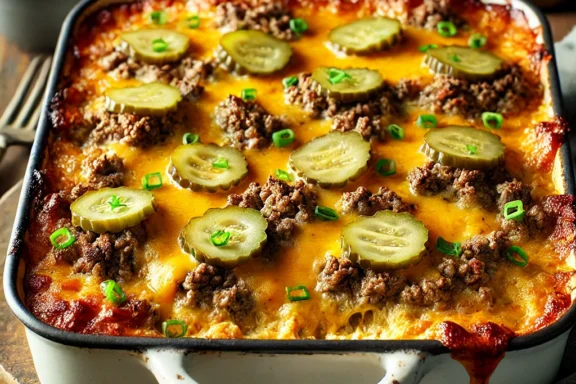Low-Carb Diet for Beginners: Low-carb diets have become a popular choice for people aiming to lose weight, stabilize blood sugar levels, and improve overall health. However, if you’re new to the lifestyle, making the switch can seem daunting. Whether you’re trying a keto diet, looking to improve your fitness, or simply seeking meal-prep-friendly options, this guide—based on insights from trusted health sources like Healthline—will simplify the process.
Let’s dive into 10 actionable tips that will make your transition into a low-carb diet easier and more successful, whether you’re a beginner, a fitness enthusiast, or a busy professional.
1. Understand the Basics of Low-Carb Diet for Beginners
A low-carb diet focuses on reducing carbohydrate intake while increasing protein and healthy fats. This typically means cutting down on bread, pasta, and sugary foods and instead eating more vegetables, lean meats, and healthy fats.
Why It Works:
By reducing carbs, your body begins to rely on stored fat for energy, a process called ketosis. This metabolic shift is central to the ketogenic diet and many other low-carb approaches.
Internal Resource:
Check out our Balanced and Inspiring Lifestyle Guide to learn more about how diet plays a crucial role in overall wellness.
2. Define Your Low-Carb Goals
Understanding your personal goals helps determine the best low-carb diet for you.
- Weight Loss Seekers: Opt for stricter low-carb plans like the keto diet, which limits carbs to 20-50g per day.
- Blood Sugar Management: Focus on moderate-carb plans with high-fiber foods.
- Busy Professionals: Choose easy, meal-prep-friendly recipes that keep you on track.
Pro Tip:
Track your daily carb intake using apps like MyFitnessPal or Cronometer to spot patterns and measure progress.
3. Know What to Eat on a Low-Carb Diet
Fill your pantry with these low-carb essentials:
- Proteins: Chicken, eggs, tofu, and fish.
- Healthy Fats: Avocados, olive oil, nuts, and seeds.
- Low-Carb Vegetables: Spinach, zucchini, broccoli, and cauliflower.
Foods to Avoid:
- Sugary drinks
- High-carb snacks (chips, crackers)
- Starchy vegetables (potatoes, corn)
Related Article:
For more meal ideas, check out our Low-Carb Casseroles Guide.
4. Meal Prep for Low-Carb Success
Meal prepping is essential to stay consistent on a low-carb diet. Spend a few hours each week preparing meals or snacks to avoid resorting to high-carb options during busy days.
Meal Ideas:
- Breakfast: Egg muffins with spinach and cheese.
- Lunch: Grilled chicken salad with olive oil dressing.
- Dinner: Zucchini noodles with marinara and meatballs.
External Link:
For more meal prep inspiration, visit Healthline’s Low-Carb Recipes.
5. Beware of Hidden Carbs
Many foods labeled “low-fat” or “healthy” might contain added sugars or carbs. Always read nutrition labels carefully.
Sneaky Sources of Carbs:
- Sauces and dressings (e.g., ketchup, BBQ sauce)
- Processed snacks (even protein bars!)
- Sweetened beverages
Case Study:
Sarah, a keto follower, discovered that her salad dressing had 12g of carbs per serving. By switching to an olive oil-based dressing, she was able to stay in ketosis.
6. Manage Keto Flu Symptoms
If you’re starting the keto diet, you may experience symptoms like fatigue, headaches, or irritability as your body adjusts. This phase, known as “keto flu,” typically lasts a few days.
Tips to Combat Keto Flu:
- Drink plenty of water and electrolyte-rich beverages.
- Add extra salt to your meals.
- Ensure you’re getting enough rest and sleep.
7. Stay Active for Better Results
Pairing a low-carb diet with regular exercise can accelerate weight loss and boost energy levels.
Recommended Activities:
- HIIT (High-Intensity Interval Training): Efficient for burning fat.
- Strength Training: Builds muscle and increases metabolism.
- Yoga: Improves flexibility and helps manage stress.
8. Experiment and Personalize Your Plan
Everyone’s body reacts differently to dietary changes, so feel free to experiment with different carb levels to find what works for you.
Example:
If you’re transitioning from a high-carb diet, start with 100g of carbs per day and gradually reduce to 50g or less as your body adjusts.
External Link:
Learn more about Personalized Diet Approaches on Healthline.
9. Get Inspired by Success Stories
Hearing success stories from others can keep you motivated on your low-carb journey.
Mark’s Journey:
Lost 30 lbs in three months with a basic low-carb plan.
Jenna’s Transformation:
Reversed pre-diabetes by combining a low-carb diet with regular walks.
Pro Tip:
Join online communities or social media groups for low-carb enthusiasts to share progress and stay motivated.
10. Consult a Professional
Before fully committing to a low-carb diet, it’s important to consult with a healthcare professional or registered dietitian who can help tailor your plan to your unique needs.
Conclusion: Start Your Low-Carb Journey Today
A low-carb diet offers numerous health benefits, but success comes from creating sustainable, informed habits. Set clear goals, stock up on low-carb staples, and embrace meal prepping to set yourself up for success.
Take Action Today:
Explore more low-carb recipes, tips, and lifestyle guides on Mortal Act. Don’t forget to share your progress in the comments below or connect with us on social media for more support!
Explore More Low-Carb Recipes:
- 5 Benefits of Cauliflower Fried Rice
- 7 Reasons to Love Cauliflower Fried Rice
- Low-Carb Eggplant Lasagna with 4 Easy Steps
Stay Connected with Mortal Act
For more recipes and lifestyle inspiration, follow us on Instagram and Threads.








1 Comment